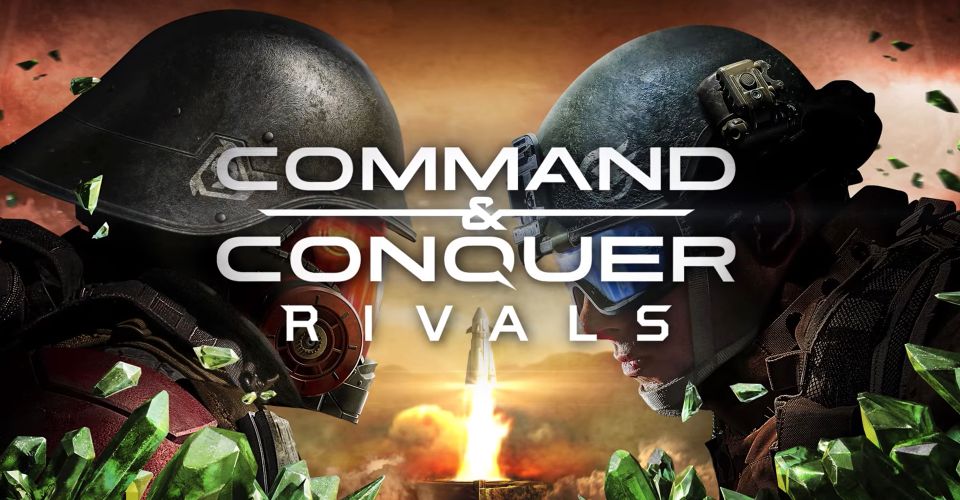Command & Conquer: Rivals Review – Tiberium Poisoning Through Microtransactions

Fans were concerned when Command & Conquer: Rivals was announced. First revealed at E3 2018, the potential for a return of the beloved Command & Conquer franchise was outdone in the eyes of gamers by the format of this new title. After all, Command & Conquer: Rivals moved the franchise into mobile gaming like Clash Royale, and therefore all the pitfalls that could potentially come with it.
Unfortunately, those worries from within the community were not without good reason. Command & Conquer: Rivals is a Command & Conquer game in name only, with huge differences from the tone of the games that came before it. A lot of this comes from the limitations that have been placed on the game to fit within the tropes of mobile gaming, which is disappointing given how many great games are available on mobile devices that ignore these negative conventions.
Related: Command & Conquer: Rivals Release Is Now Available
One of the biggest problems that Command& Conquer: Rivals faces is aligning itself with the history of Command & Conquer. Quite simply, there’s not a lot here that feels like a Command & Conquer game, with a focus on fast gameplay without as much emphasis on long-burn tactics. This is by design, with the gameplay revolving entirely around owning specific parts of the map grid at opportune moments to launch nukes at the opposition, but it feels far from what Command & Conquer fans would want.

It boils down to the fact that this type of mobile strategy game does not work well with the franchise’s roots. Although there are a few tactical nods here and there – striking at the right time, going after the other team’s Tiberium harvester, or targeting an unexpected platform – in general gameplay consists of a simplistic rock-paper-scissors approach to having the right unit for the right situation. Gone is the priority given to base defense and building an army for specific eventualities, with Command & Conquer: Rivals stuck with skirmishes by design.
There’s a clear attempt to take on the Clash Royale formula that dominates the mobile strategy market, with similar overtones and a focus on maintaining a fast pace. Where Command & Conquer: Rivals differs, however, is that players have control over individual units, sending them to specific tiles and to attack specific enemy units if they so choose. Here, at least, players can see a shadow of the old series, with a tiny amount of micromanagement and at least Command & Conquer‘s trademark voice snippets as a unit is given an order.
Tonally, though, the game feels very different from the rest of its franchise. Command & Conquer has not always been serious, with the Red Alert series in particular amping up the hammy quality that had sometimes caught hold of the series to spectacular effect. However, Command & Conquer: Rivals has almost the feel of a toy box, and this isn’t helped by the disposable feel of the units in question, to be discarded when an appropriate moment strikes.
That’s not necessarily a problem for the strategy genre, as outlined by the success of the Nintendo Wars series of games. However, Command & Conquer: Rivals is not just an awkward fit for the franchise, but also showcases some of the worst examples of business practices in mobile gaming. The game is rife with microtransactions from the get go. Indeed, the only positive to be found is that, at least, it doesn’t try to get to you spend money to get an instant Ion Cannon or something equally heinous.

Where this truly falls down is a reliance on levels for individual units. Although players will unlock different units via card unlocks – with a random element that of course ties into loot box mechanics – there’s a priority on levelling up different unit types through training. What this means is that a player’s individual units will not necessarily be on par with someone else trying to climb the rankings, immediately giving those with the power to level up regularly an advantage and pushing a meritocratic approach to tactics out of the window when it comes to the overall leaderboards.
It’s a story that those who are familiar with the free-to-play category of mobile gaming will know all too well. After all, it’s a framework that many microtransaction-based games with a multiplayer focus fall into. To truly compete, particularly at the higher levels, players need to level up, and here’s where the predatory element really comes into play. Although the game includes a matchmaking aide called ‘Fairplay’ to help curb some of the inherent problems with this system, it would be preferable to not use this model in the first place.
Command & Conquer: Rivals puts a lot of emphasis on tiering, with players segmented into different leagues based on their level. This could result in a solid community and the groundwork for a solid competitive scene. However, given the issues that the game has with microtransactions – with regular pop-ups in between games and suggested purchases even appearing as a greeting for players as they boot up the game – it’s hard to see Command & Conquer: Rivals earning a loyal following.

As always with free-to-play games, it is possible to progress through simply playing Command & Conquer: Rivals. However, there are limitations here that push players towards making payments, such as wait times to receive crates, higher quality crates coming at a premium, and a daily limit of ten games played with a ‘Daily XP Bonus’ which makes any experience gains beyond that point negligible – a subtler mechanic to push people towards paying than a direct one such as a match cap, but still one that strongarms players away from enjoying the game at their pace.
Because of this, it is obviously easier to upgrade through paying real-world money for in-game currency. These currencies come in the form of credits, which are used for training units and acquiring cards directly, and diamonds, which are for the game’s loot box crates. As such, after a few games – which are always quick to pass – it could be very tempting to just spend some money to make progress.
Command & Conquer: Rivals is always happy to remind you of ways to spend cash on the game. The title’s storefront is always a press away, with ‘deals’ seemingly constantly available to give players a boost. Some of the prices for these packs are also exorbitant, in line with wait-time machines like The Simpsons: Tapped Out.

Command & Conquer: Rivals is therefore very hard to recommend. Long-term fans of the franchise will likely reject it for the heavy changes it has made to the formula, with all eyes now on whether those Command & Conquer remasters will deliver the RTS style that fans enjoy. It’s an extremely poor use of a beloved gaming franchise, and EA should have taken more care given Command & Conquer’s mismanagement over the years.
For players into mobile strategy games such as Clash Royale it may be an easier pill to swallow, but Command & Conquer: Rivals is a terrible example of bad business practices in an industry that sorely needs an overhaul. Recently, loot boxes in mobile games were named as a potential reason for the rapid rise in child gambling problems, and including such a heavy emphasis on microtransactions leaves a sour taste in the mouth.
All that remains is to see just where this lies in comparison to other poor uses of old properties in mobile gaming. Although Command & Conquer: Rivals is still some ways off the horror show that was Dungeon Keeper Mobile, by virtue of having a game that actually functions, it is still a major let-down. One to be avoided, particularly by those who have fond memories of the franchise as a whole.
More: December 2018 Video Game Releases
Command & Conquer: Rivals is out now for iOS and Android devices. Screen Rant was provided with an iOS download code for the purposes of this review.
About The Author


















